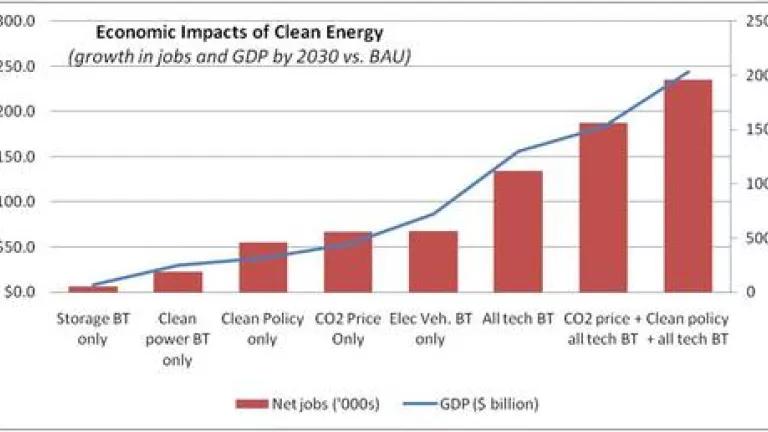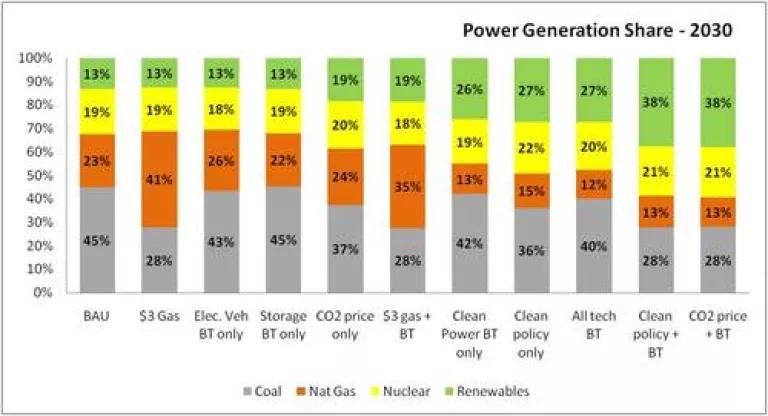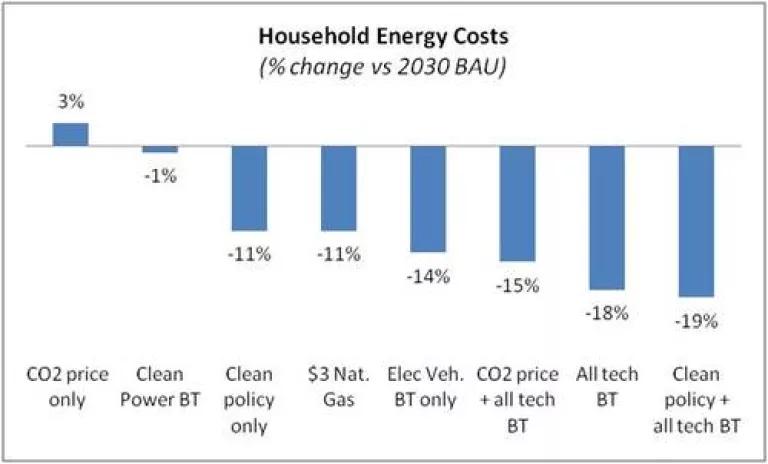Google Shows Importance of Climate and Clean Energy Policies Alongside Innovation Investment

The recently released Google/McKinsey clean energy innovation study is a great way to lose a few hours (if, you know, wonky energy analyses are your thing). In it, Google sets out to fill in one of the rather sizable data gaps in energy innovation policy – quantifying the potential return on investment from major technology breakthroughs in clean energy. (I especially recommend the data set and toolkit that Google has made public)
For the study, Google hardwired massive (and artificial) cost performance breakthroughs (50%-90% reductions) in major clean energy technologies (e.g. solar, wind, storage, electric vehicles, natural gas, nuclear, etc.) and ran the results through a McKinsey energy dispatch and macro-economic model. In other words – the study creates an artificial scenario of a world where we’ve actually achieved the transformative innovation we believe is possible in clean energy, and draws a picture of what that world looks like. While certainly the usual caveats apply when reviewing multi-decade forecasts of complex environments (i.e. cite cautiously), these types of studies can provide us with at least some visibility in what potential outcomes we can expect from innovation investment, and even provide economic justification for certain levels of funding.
Not surprisingly, the Google/McKinsey study produces some thought-provoking outcomes. Among the many conclusions of this study:
- Innovation in clean energy is great for job and GDP growth and emissions reductions, but these outcomes can vary widely based on different scenarios.
- Innovation in transportation (specifically battery technology) appears especially impactful for economic growth, providing most of the incremental economic and security benefits through 2030
- The first clean technologies to become cheaper than traditional options may have a sizable first mover advantage over other technologies
- Displacing coal power appears to require more than just innovation breakthroughs in cost. Google theorizes that the cheapness of coal as a fuel requires significant cost reductions in competing technologies in order for fuel switching to take place – which only happen post 2030 even in these artificially induced innovation breakthrough scenarios, absent a carbon price alongside.
But for me, the most important outcome of this study was its overwhelming demonstration of the need for a full-suite of clean energy and climate policies alongside innovation breakthroughs – not just a piecemeal approach that favors heavy investment in innovation, or the picking of a couple technologies, or one or two targeted policies. Instead, this modeling concludes that a comprehensive approach featuring investment in dramatic innovation alongside critical climate and clean energy policies is the most effective at boosting jobs and GDP, deploying renewables and reducing GHG emissions. Put another way - just pushing on the technology lever doesn’t solve the climate problem in time.
This dynamic is demonstrated in outcome after outcome. The chart below shows jobs and GDP increases relative to a business as usual scenario (essential the EIA’s Annual Energy Outlook model). While technology breakthroughs and individual policies have significant benefits relative to BAU, it is the combination of innovation PLUS policy that leads to the best results.
BT = Breakthrough, see Google report for description of scenarios
Similarly, renewable generation is almost 3 times higher under a comprehensive suite of policies plus innovation breakthroughs as it is under individual scenarios.

Household energy costs, see the largest reductions under a combined policy plus breakthrough innovation scenario.

The same applies, critically, for GHG emissions, where GHG emissions reductions are most significant through the combination of climate and energy policies and innovation.

My bottom line takeaway of this study - no one option can transform our energy and climate future by itself. While an individual policy, or breakthrough in a specific class of technologies (storage, vehicle batteries) can have a measurable impact, in order to meet our carbon reduction goals, grow our economy to its fullest, and have the cleanest power supply possible, we have to pursue comprehensive set of policies in addition to massive innovation investment, which must include climate and clean energy policies.



